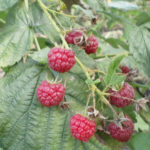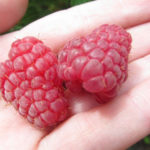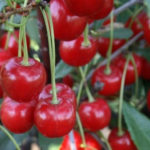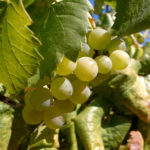Gooseberry variety Northern Captain
Fungal diseases have become a big problem in growing gooseberries in cool and humid climates. And if the bush saves a shelter from the cold, then sometimes even preventive treatments do not help from powdery mildew. Therefore, breeders first of all try to instill in the culture resistance to this disease. In 1984, the All-Russian Institute of Selection and Technology for Horticulture and Nursery applied for registration of the Northern Captain variety, the author of which is I.V. Popov. The novelty was obtained by crossing gooseberries Pink-2 and form No. 310-24 (Brazilian x Gr. Nivea). In 2007, the new variety was entered into the State Register of Breeding Achievements of Russia with admission in the North-West region (Tver, Vologda, Novgorod, Yaroslavl, Kostroma, Pskov, Leningrad, Kaliningrad regions). In addition to its sphero-heat resistance, the novelty is popular due to its unpretentiousness and productivity.
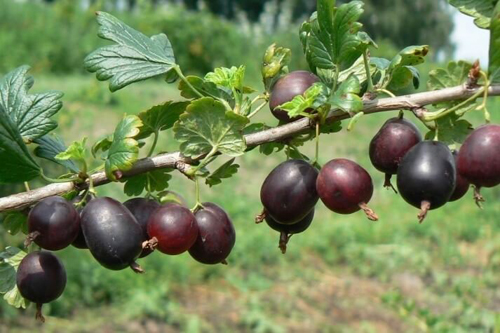
Description
The plant is vigorous, with a load of crops, the bush is medium spreading. The crown is quite dense due to strong branching. The sum of the growth length of the current year is 23 m, of which the branching of skeletal branches accounts for 67%, and the replacement shoots - 33%. Young shoots of the variety are of medium thickness, have a slight bend, strongly branching, green bark, no pubescence. The tops of zero gooseberry shoots have an anthocyanin coloration, also without pubescence. The bark of the lignified shoot is gray, the thickness of the shoots does not increase much. The direction of the branches in the bush is oblique. Thorniness is weak. The North Captain's thorns are short, less than 7 mm long, rare, thin, single, matte, without shine, grow straight, localized at the base of the shoots. Null shoots are devoid of thorns, thorns are also absent. The buds are medium in size, oblong, brown in color, with a light pointed tip, no pubescence. The buds grow, clinging to the shoot, are placed oppositely on the shoot. The apical kidney is solitary.
The leaves of the variety are large, three-lobed, dark green in color, there is no pubescence on both sides. The leaf blade of the gooseberry is soft, herbaceous, wavy, slightly curved, the surface is slightly wrinkled, slightly shiny. The edges of the Northern Captain's blade are decorated with large teeth with blunt tops. The main veins are completely colored. The central blade has an elongated shape and additional projections, the apex is rounded, the length of the middle blade exceeds the lateral ones. The lateral edges of the central blade are cut straight to the base. The lateral lobes are 2 cm shorter than the central one, while they are the same in width. The junction angle of the central and lateral blades is sharp. The basal lobes are well developed, wider than the central lobes. The junction of the base of the leaf and the petiole forms an obtuse angle. The junction of the plate with the petiole is heart-shaped, the notch is weak. The shape of the petiole is rounded. The length of the petiole is 2.5 cm, the thickness is medium, the pubescence is weak, it is attached to the shoot at an angle of 45 °. Flowers are oval, large. Sepals are green with reddish stripes along the edges, the arrangement of sepals is free. The brush consists of 2 - 3 flowers.

The fruits of the North Captain are round or round-oval in shape, with an extended base. The skin is of moderate density, the color of ripe gooseberries is dark purple, almost black, a waxy coating is present. The venation is not very strong, the veins are colored lighter than the main color. The taste of the variety is sweet and sour, refreshing. The seeds are small. The cup is closed. The peduncle is of medium length, greenish-red, no pubescence, easy separation from the fruit. 100 grams of raw product contains: dry matter 10.9%, total sugars 8.9%, titratable acidity 2.9%, ascorbic acid 12.1 mg, anthocyanins 90.0 mg. The berries are small, the average weight is about 3.5 - 4.0 grams.
Characteristics
- The North Captain has a pretty good early maturity. On a two-year-old gooseberry, with good agricultural technology, there are already from 347 to 800 berries;
- the variety belongs to early flowering. Flowering usually occurs in the third decade of April - the first decade of May. Duration is about 10 days;
- ripening period is medium late. The ripening time begins in the second decade of July;
- yield, according to the State Register, over the years of study ranged from 16.2 to 26.6 c / ha. 1.2 - 2.5 kg of fruits are removed from two-year-old bushes. With age, the yield increases, so, 3.2 kg are removed from a 6-year-old plant, from an 8-year-old plant to 10 - 12 kg. In Moscow, the yield was over 20 t / ha;
- self-fertility of the gooseberry is insufficient. With natural pollination, the plant is capable of setting up to 10% of the fruits. But if you drop off next to Russian, Plum or Pink 2, then not only the yield will increase, but also the size of the berries;
- thanks to its well-developed root system, the North Captain can tolerate short periods of drought. But if the plant does not receive moisture for 1.5 or 2 months, then it can shed its foliage;
- winter hardiness at a high level. The variety is able to withstand frosts at -40 ° C. But thaws followed by a sharp drop in temperature to -35 ° C or -38 ° C can cause significant damage. True, our hero is able to quickly, in a year or two, restore his productivity;
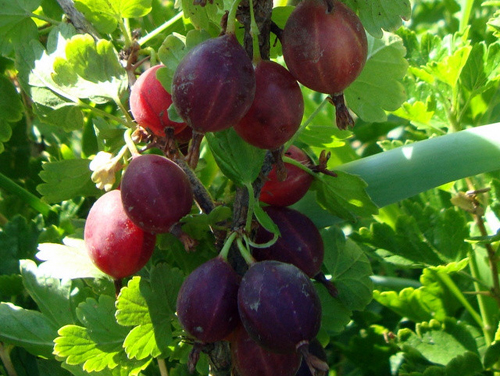
- immunity is excellent. Gooseberry is highly resistant to powdery mildew, anthracnose and septoria blight are weakly affected. In addition, it is resistant to pests - fire and sawfly;
- fruit marketability is at a high level. Thanks to their dense skin, the berries of the North Captain do not crack. In addition, they do not crumble even after a long stay on the branches;
- transportability is not bad, fruits can withstand transportation over a long distance, do not burst;
- the way of use is universal. Despite the fact that our hero is more likely to be classified as technical varieties, in natural form, the taste of ripe fruits is not bad. The variety is well suited for processing into juices with pulp, jam, wine.
Planting and leaving
Both spring and autumn periods are suitable for planting. The culture prefers well-fertilized soils with a loose structure. In order to maintain moisture and improve the growth of the North Captain's shoots, during the growing season, the soil under the bush is loosened at least 3-4 times, weeded and mulched using dry grass or peat. In spring and autumn, the aisles are dug to a depth of 15 cm, around the bushes - no deeper than 10 cm. Plants that have entered the fruiting period can be fertilized with organic matter, bringing it into the trunk circle for digging. Mineral fertilizers (superphosphate, potassium salt) are scattered over the entire area occupied by gooseberry planting. In the years following the formation, weak root or thickening shoots, broken branches or branches affected by disease and pests should be removed from the plant. Young bushes easily propagate using horizontal layers, old ones - using vertical ones.
The northern captain is one of the most unpretentious varieties. It is drought tolerant, has excellent frost resistance and disease resistance. This variety is perfect for hobby gardens that visit only on weekends - ripe berries do not crumble in anticipation of harvest. By the way, picking gooseberries is easy, it comes off without effort, and your hands will remain intact, since the shoots have a weak thorniness. The crop is suitable for various processing. But our hero also has disadvantages. The bush is too dense, therefore it requires regular thinning. In addition, the berry is not large enough, therefore, the variety is rarely used in industrial plantings, and the taste cannot be called dessert.

